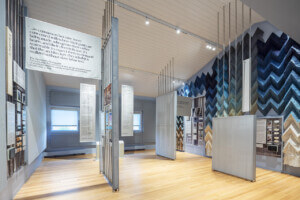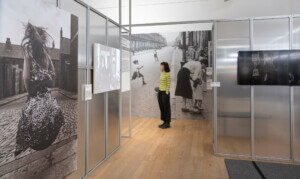Tucked away in the homogenous expanse of warehouses and dilapidated surface streets of the Sunset Park waterfront is an unassuming complex of industrial buildings gated off from the street by a concrete enclosure. Prominent signage in plain, early-90s sans serif font announces arrival at the Brooklyn Army Terminal (BAT), where taped, home-printed markers guide visitors to one of the building’s lower levels, which currently houses These Conditions, a site-specific exhibition that functions as the pedagogical expression of Adelita Husni Bey’s fellowship at the Vera List Center for Art and Politics (an offshoot of The New School).
The artist’s research focuses on the historical precedents for and ongoing sociopolitical effects of the current pandemic, and her installation at the BAT, on view through April 8, is a deeply incisive experience for those willing to make the journey to the far reaches of Brooklyn and meditate on the network of ideas she lays out with affecting clarity.
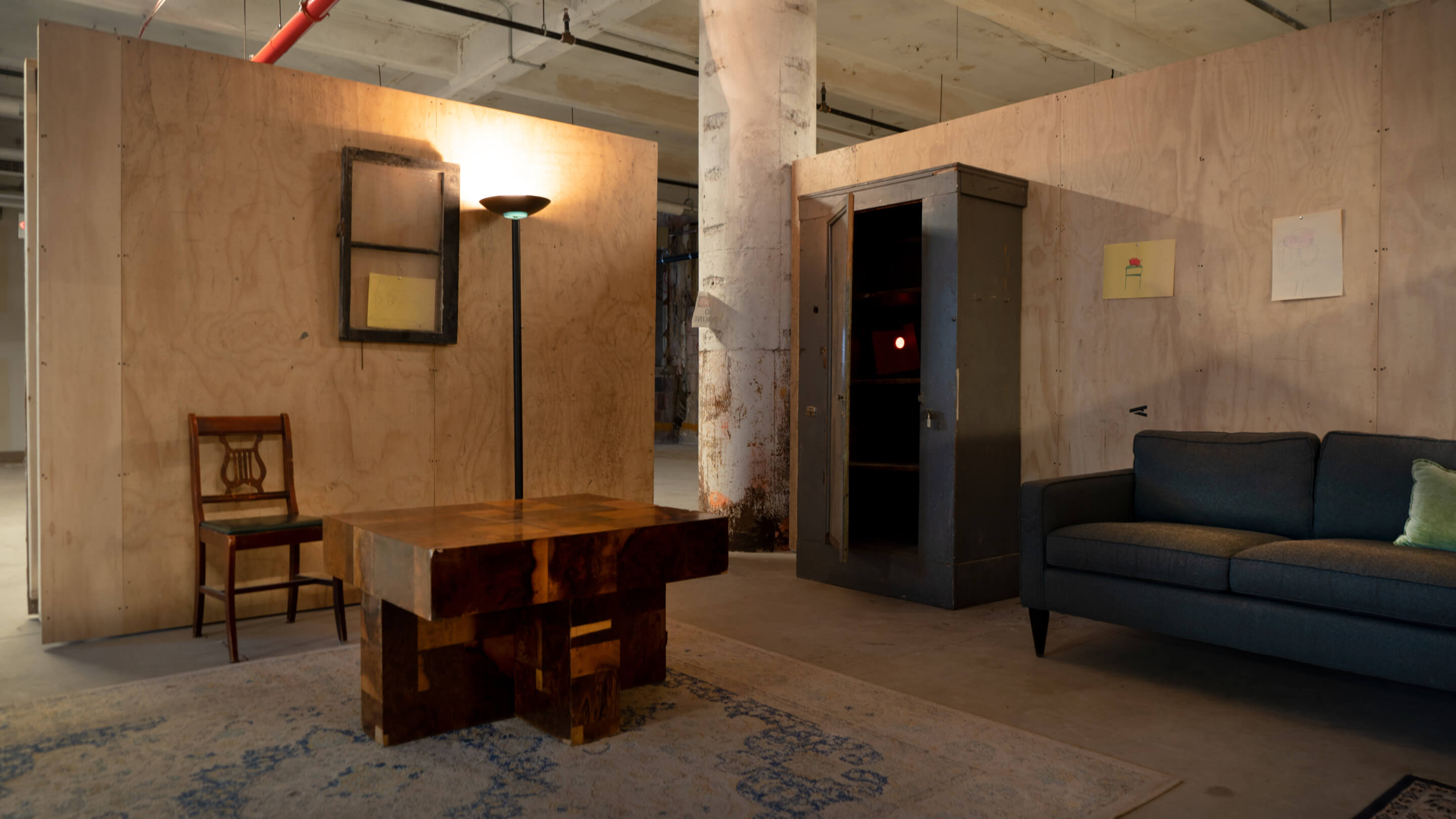
Presented by the Vera List Center, the project comprises an “exhibition and pedagogical film set” involving a weekly, two-month-long workshop, a public study group, and movement-based performances. The project is Husni Bey’s first site-specific work; staged in the BAT’s Annex, the building usually functions as a manufacturing hub as well as a COVID testing and vaccination site. The concrete, open-floorplan structure was originally constructed during the 1918 Spanish Flu pandemic as a military supply base, and Husni Bey elegantly weaves the current sociopolitical and historical resonances into her installation.
Organized by 10-foot-tall plaster-and-wood dividers, the installation first confronts the viewer with a drawing of Medieval grave diggers, before which a collection of stones is scattered across the floor. Didactic signage on bordering walls displays excerpts from texts describing plague outbreaks throughout European history, including Lucretius’s De Rerum Naturae (50 BC). A neighboring enclave houses a mini theater decorated by vintage signage from the early 1990s protesting the New York City government’s response (or lack thereof) to the growing AIDS epidemic while a monitor plays a documentary by the activist collective ACT UP.
Turning the next corner, visitors encounter a partitioned space resembling a quotidian living room, with a few conspicuously incongruent elements; though the furniture is a typical middle class, mid-century modern design, the decor is entirely comprised of children’s artworks. Drawings by kids no older than 3rd grade adorn the walls, a construction paper vase is perched atop a side table, and a mysterious cabinet opens onto another drawing illuminated from behind. While it may at first seem like a non-sequitur, the decision becomes evident after observing the two works that bracket the exhibition’s layout—a video that plays on a loop at the far end of the warehouse and a circular, curtained enclosure at the back of the space, which contains a group of speakers from which voices speaking in Italian are interspersed with snippets of music.
The audio, a nearby information sheet explains, is a libretto titled Cronaca del Tempo Ripetuto (A chronicle of histories repeating, 2021), which is the result of a workshop Husni Bey (whose parents were Italian) led with OCRA (Chamber Orchestra of Radicondoli, Tuscany), a self-run collective of young musicians without a conductor. Inspired by the ambient sounds of their pandemic-stricken town and images from the region’s plague histories, the group composed an audio track that includes a local theater company’s musical interpretation of the area’s quarantine protocols from today and 1631.
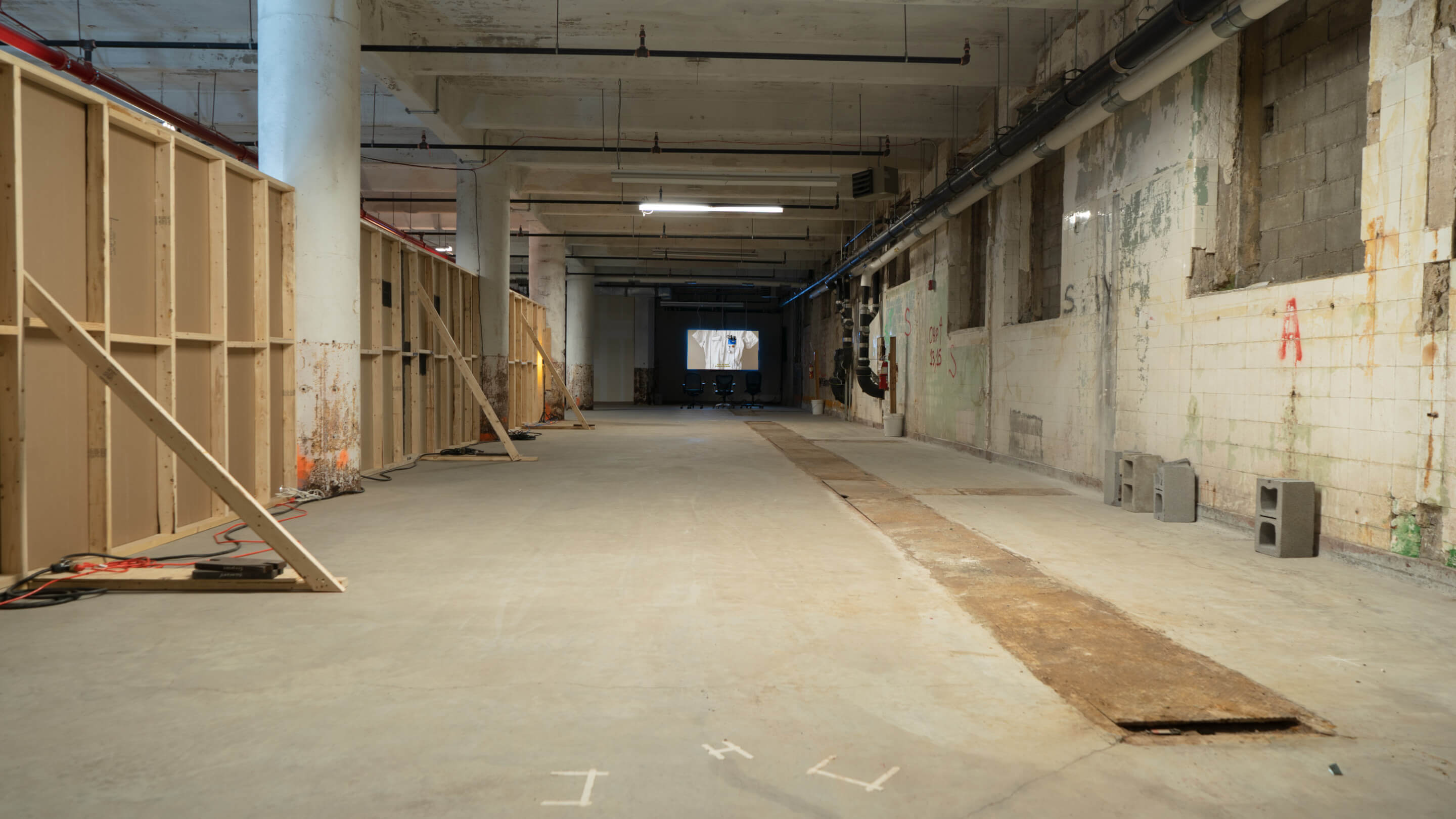
The film screened at the ultimate end of the space is the most powerful work in the show. Shot entirely on Zoom, On Necessary Work (2021) documents the pandemic experiences of Danish and American unionized nurses, who discuss their labor conditions over a periodic, six-week-long workshop in the spring of 2021 while filming their workplaces. The film provides a rare close look at the sacrifices made by these women, as they express it in their own words—accounts that undermine the “essential worker” mythologization that was consistently offered in lieu of material support by the forces in power throughout the pandemic. Though the video quality is often pixelated, the formal attributes of the film are entirely apt; shifting back and forth between the tessellated square format to individual shots, the focus never remains on one subject, creating a quilt-like montage of experiences.
Two particularly loaded moments of the film provide a succinct insight into its approach. In one segment, the nurses balance objects of significance to them on top of each other until the objects topple over. Mirroring the fallacy inherent to hierarchical organizations of power, the exercise reveals the importance each irregularly shaped object holds in maintaining a coherent collective form. Notably, one of the nurses discusses a common pair of compression socks when discussing the objects in her group. Without them, she explains, she would be unable to perform the responsibilities required of her oppressively exploitative job. The second moment comes from happenstance—two children, the oldest no older than 7, cling to their mother as she participates in the discussion. The image resonates as it embodies a central theme many of the nurses touch on throughout the film, namely that their responsibilities as caretakers extend to their home life as well in the form of unpaid domestic labor.
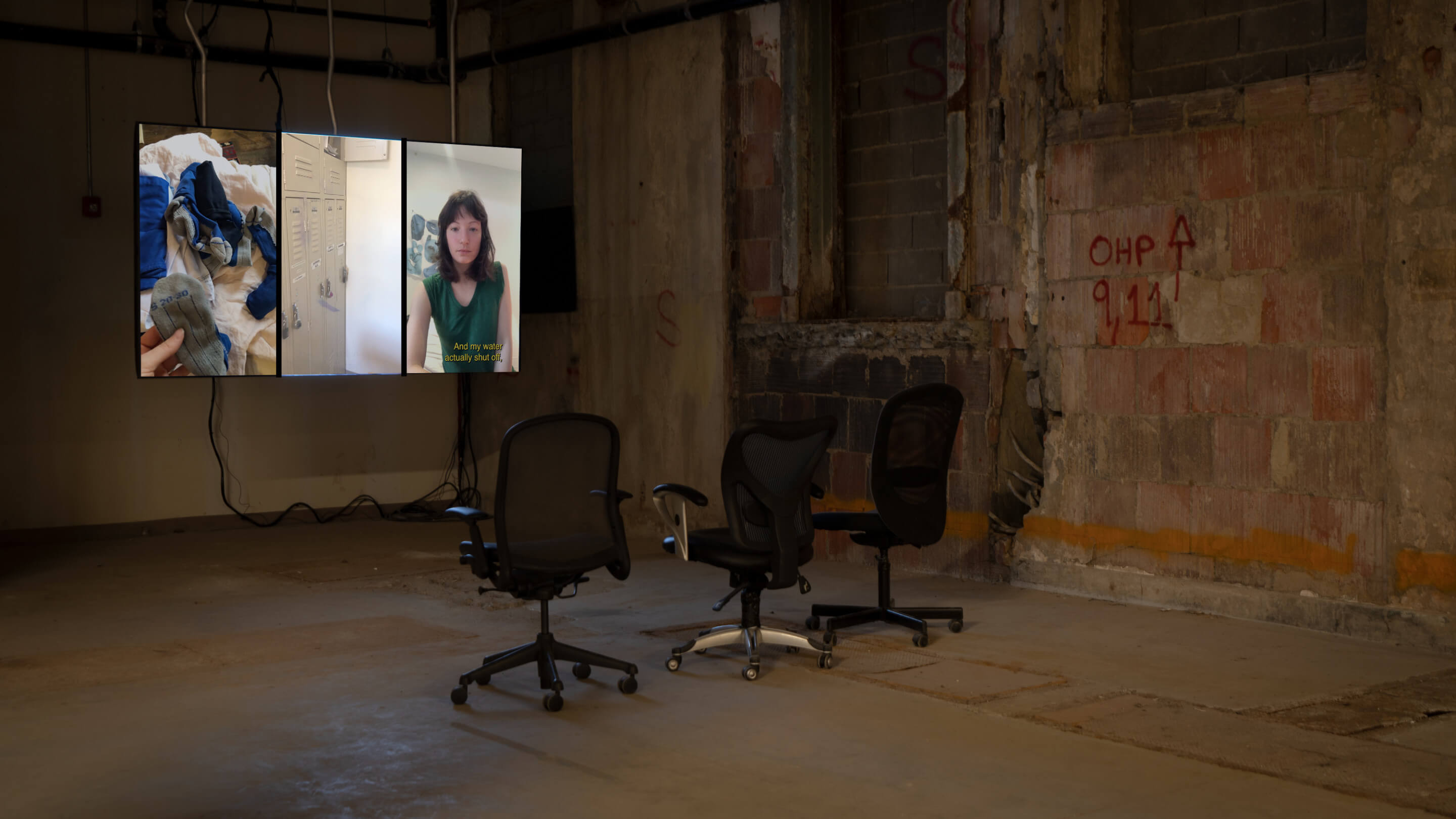
These Conditions foregrounds the circularity of the diseases that have shaped our history and current lived reality while opening a discussion regarding the systems that manage and document their effects. While this would be more than enough food for thought, Husni Bey has ensured the installation itself reflects the status of her subjects; like the overwhelming majority of the people who bore, and continue to bear, the brunt of the COVID’s devastation, the exhibition exists in a state of marginalization. Visiting the show isn’t convenient, the space was not built for its current usage, and the historical precedents for its existence are as tragic as they are invisible.
The historical familiarity of the pandemic’s consequences is perhaps what renders the exhibition so gut-wrenching—throughout the experience I was reminded of Franny Choi’s poem, “The World Keeps Ending, and The World Keeps Going On.” Laying out the fractal nature of history while mourning the forgotten dead of imperial empires’ calculated negligence, These Conditions rises to the occasion of our ongoing tragedies, elevating the voices of the downtrodden while laying the groundwork for educated action.








